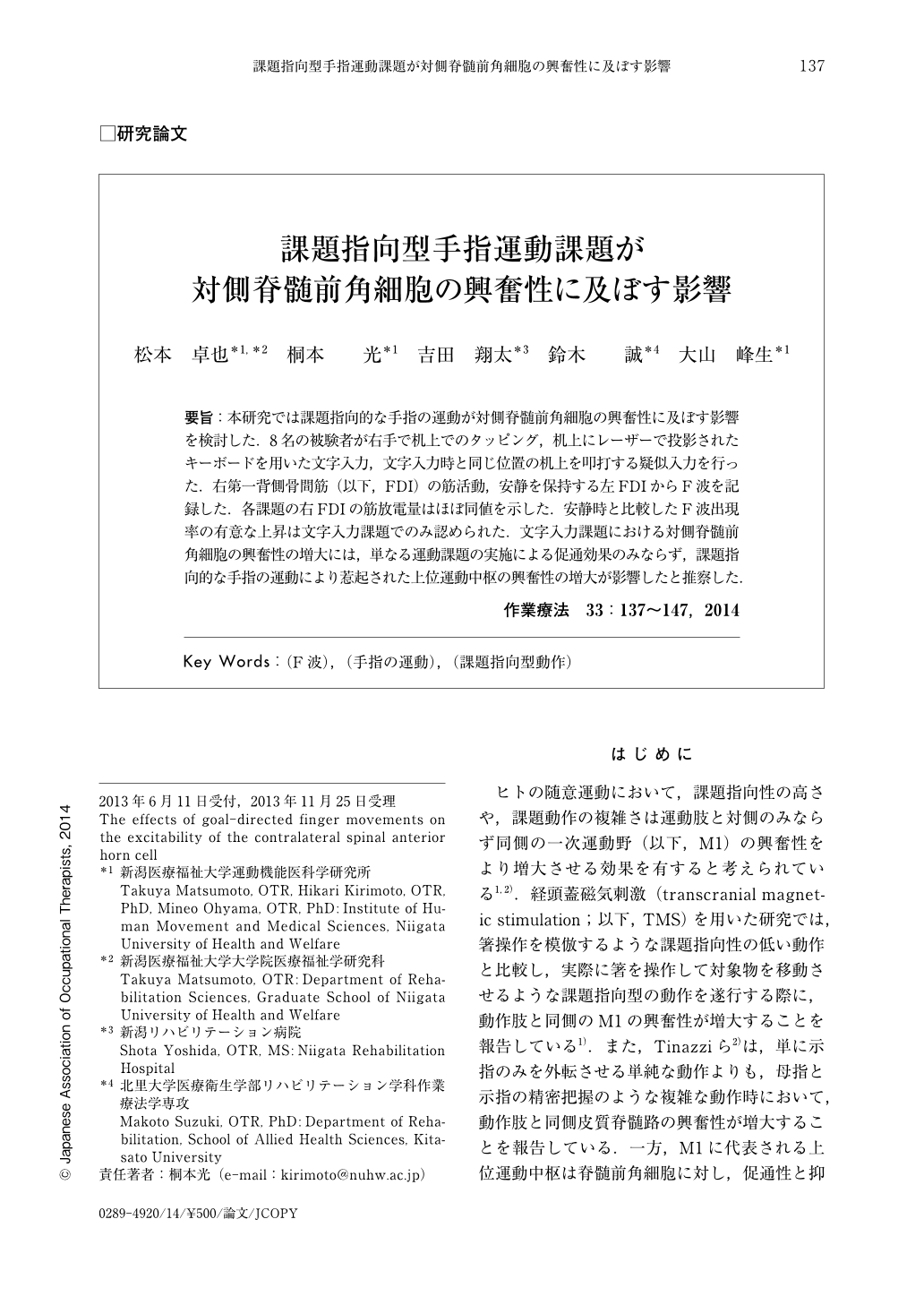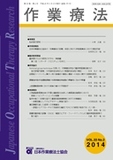Japanese
English
- 販売していません
- Abstract 文献概要
- 1ページ目 Look Inside
- 参考文献 Reference
要旨:本研究では課題指向的な手指の運動が対側脊髄前角細胞の興奮性に及ぼす影響を検討した.8名の被験者が右手で机上でのタッピング,机上にレーザーで投影されたキーボードを用いた文字入力,文字入力時と同じ位置の机上を叩打する疑似入力を行った.右第一背側骨間筋(以下,FDI)の筋活動,安静を保持する左FDIからF波を記録した.各課題の右FDIの筋放電量はほぼ同値を示した.安静時と比較したF波出現率の有意な上昇は文字入力課題でのみ認められた.文字入力課題における対側脊髄前角細胞の興奮性の増大には,単なる運動課題の実施による促通効果のみならず,課題指向的な手指の運動により惹起された上位運動中枢の興奮性の増大が影響したと推察した.
This study was performed to elucidate whether or not goal-directed right finger tapping tasks modulate the excitability of the contralateral (left) spinal anterior horn cell. Eight healthy right-handed subjects were divided into three right-index-finger-tapping task groups and a control as follows: (1) the control group at rest, (2) self-paced simple tapping on the desk, (3) key presses using a laser virtual keyboard, and (4) key presses using a sham keyboard which transformed letter strings into number strings. The subjects were asked to keep the left hand relaxed during the right finger tapping task. Electromyography (EMG) was recorded from the right first dorsal interosseous (FDI) muscle, and F-waves elicited by percutaneous electrical stimulation of the ulnar nerve at the wrist were recorded from the left FDI muscle. F-wave persistence was measured and calculated. EMG activity in the right FDI during each finger tapping task showed levels similar to those of all tasks. Only in the key presses using the laser virtual keyboard condition was F-wave persistence of the left FDI significantly increased compared with the control. These results suggest that the excitability of the spinal anterior horn cell contralateral to the finger tapping task was facilitated by not only contraction of the contralateral finger muscle, but also the increase of cortical activation caused by performing goal-directed finger movement. Our findings suggest that performing goal-directed movement with non-impaired upper extremities more than simple movements may be effective for impaired upper extremity function in patients with hemiparesis.

Copyright © 2014, Japanese Association of Occupational Therapists. All rights reserved.


